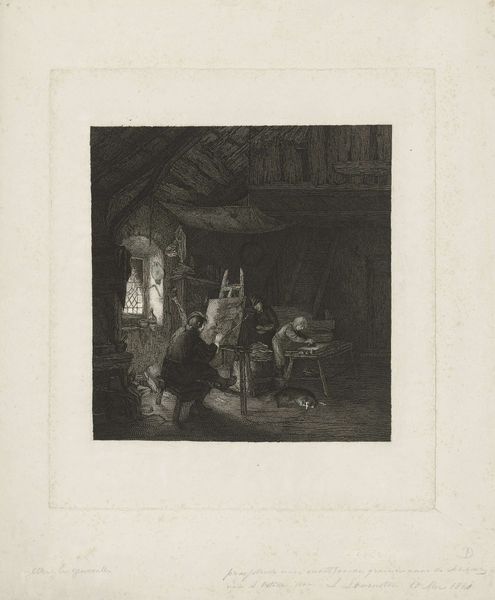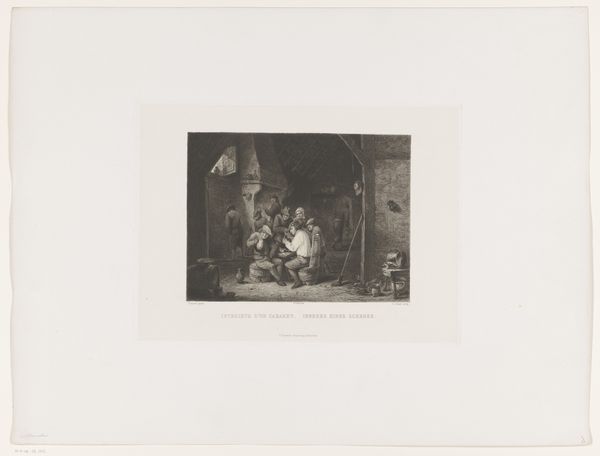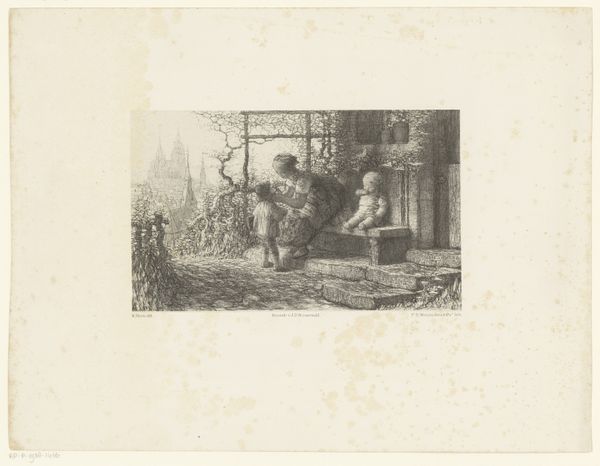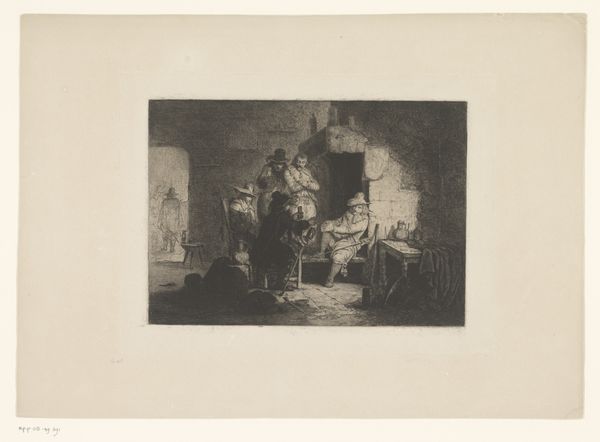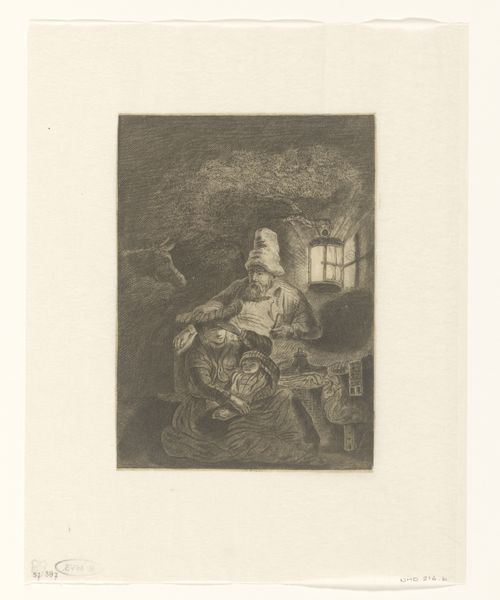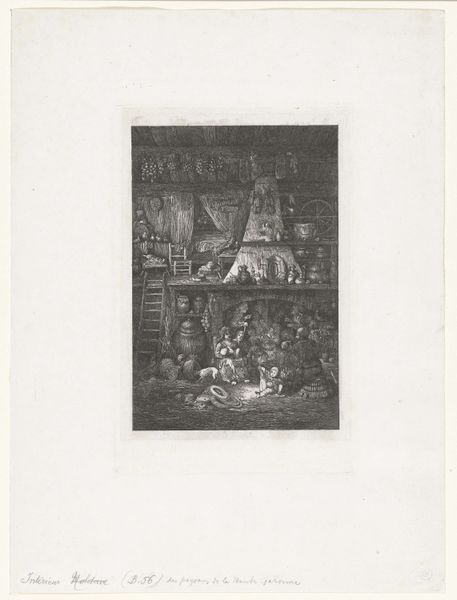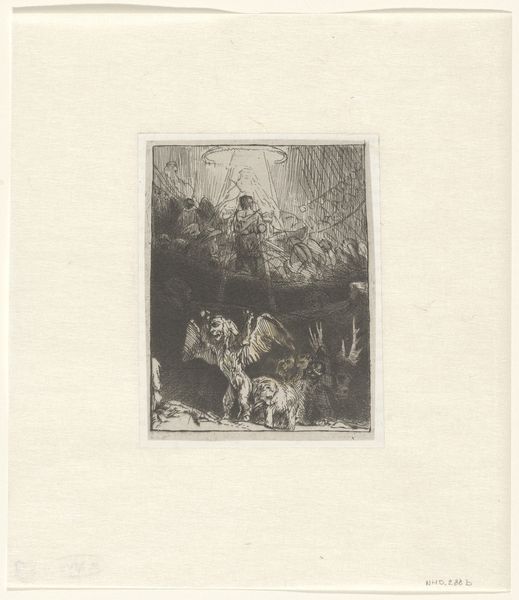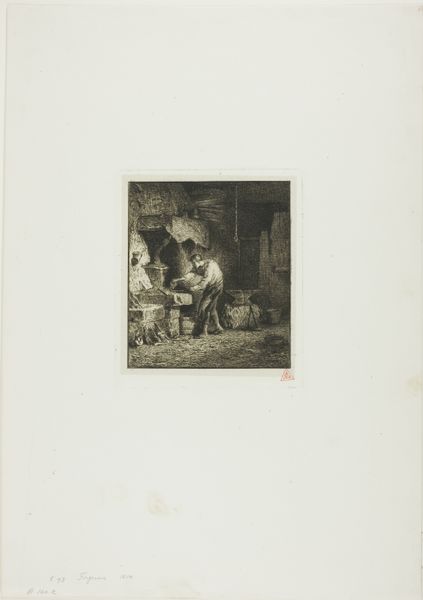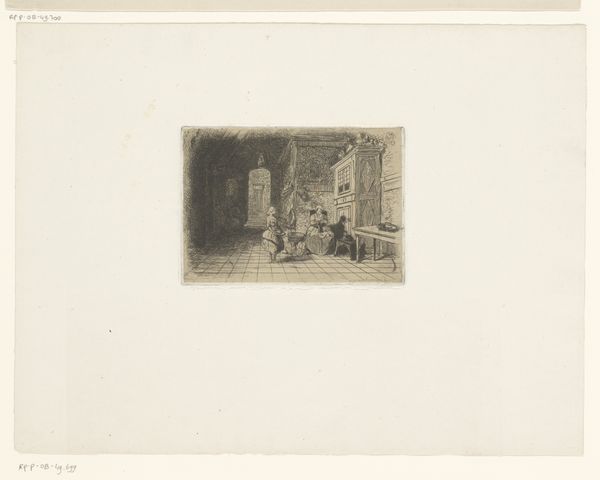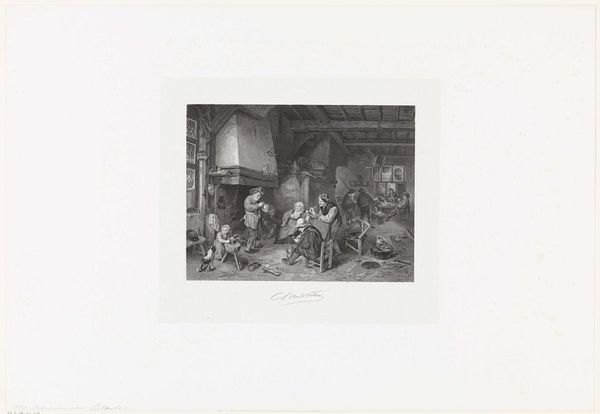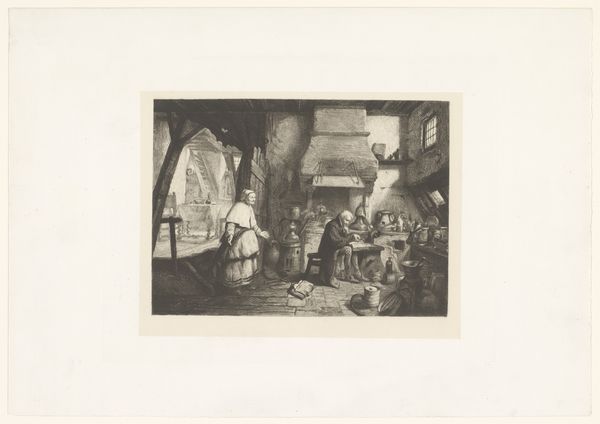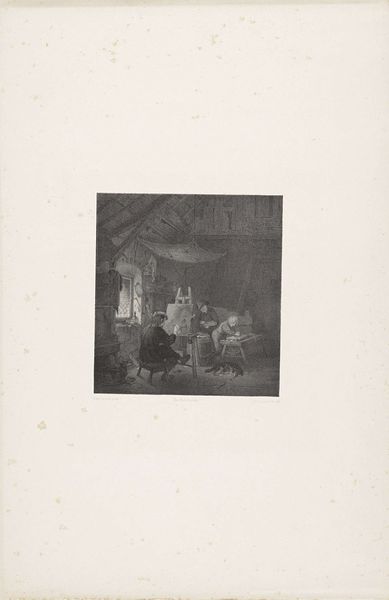
drawing, print, pencil
#
pencil drawn
#
drawing
#
toned paper
# print
#
pencil sketch
#
pencil drawing
#
romanticism
#
pencil
#
genre-painting
Dimensions: height 225 mm, width 240 mm
Copyright: Rijks Museum: Open Domain
Editor: This is "Schilder in zijn atelier" or "Painter in his studio," by Paulus Anthonius Liernur, made sometime between 1841 and 1857. It's a pencil drawing, maybe even a print based on one, on toned paper. It feels very intimate, like a peek into the artist's world. What stands out to you about this work? Curator: Immediately, the labor is apparent. We see the artist, his materials, the tangible act of creation. How might the artist’s social standing or access to materials, like that toned paper, influence his ability to produce this work? Editor: I hadn't really thought about the materials themselves, more about the scene it depicts. The toned paper definitely gives it a particular cast, doesn’t it? Were such materials easily available? Curator: No, the toned paper speaks to a certain level of investment, or access. It isn't simply about depicting a painter; it's about the entire production. How did the economics of artmaking at this time, particularly access to quality materials, shape the artwork produced? We must consider this when regarding the final piece. The means directly influence the ends. Editor: That’s a fascinating point. So, the toned paper isn’t just an aesthetic choice but reflects a whole system of access and economic privilege. It almost blurs the line between “high art” and the material realities behind it. Do you think the subject matter is itself commenting on this? Curator: Perhaps subconsciously, but most certainly the work reveals, through its very materiality, the circumstances of its creation. Considering his use of pencil, rather than paint, where does this work exist along the spectrum of "fine art" production versus utilitarian rendering? It raises pertinent questions about the consumption of art too – who was the intended audience? Was it for public exhibition, sale, or personal reflection? Editor: It really puts the artwork in a new light when you consider the materials and production in such detail. I usually focus more on the composition, but now I see so much more at play. Curator: Precisely! The art *is* the social context, made visible through its materials. It forces us to question the conventional separation between art and the labor and materials that constitute it.
Comments
No comments
Be the first to comment and join the conversation on the ultimate creative platform.
